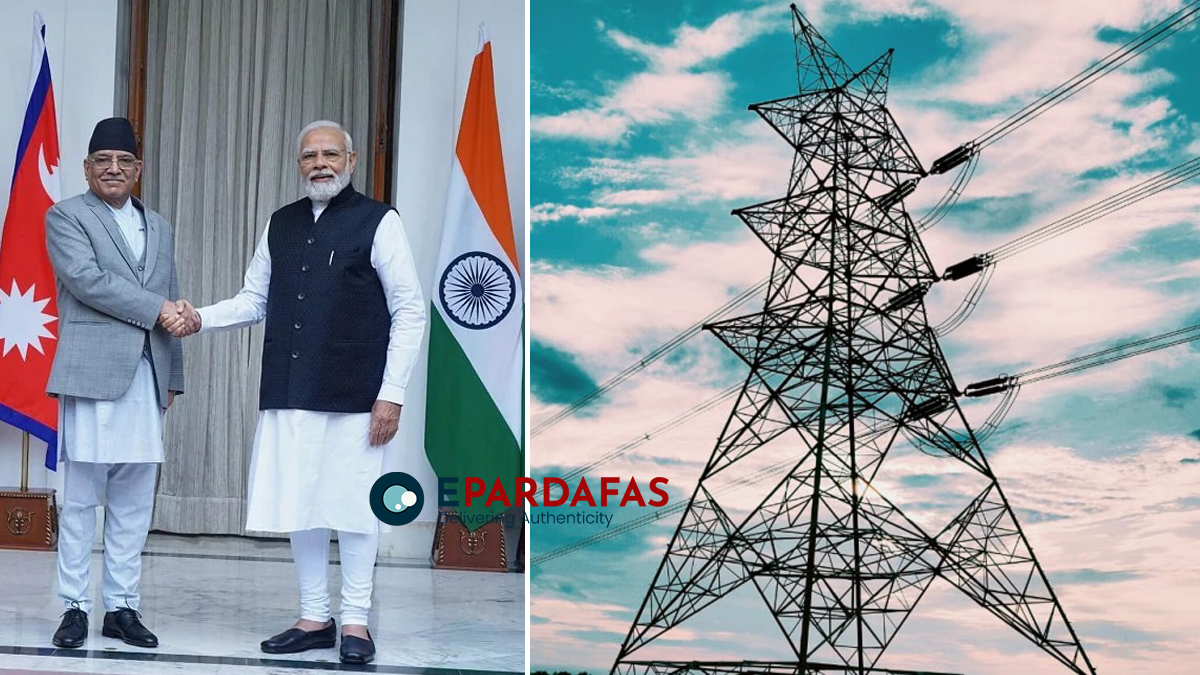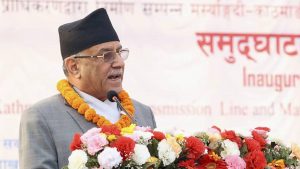
Nepal’s Power Surge: Illuminating the Future of Energy Trade with India

In recent times, Nepal has found itself at the epicenter of an electrifying discourse, quite literally. The burgeoning debate surrounding electricity export has not only become a focal point of national discussions but has also positioned Nepal as a key player in the energy trade landscape. The Nepal Electricity Authority’s remarkable earnings of NPR 15.24 billion through electricity sales to India in the last fiscal year have set the stage for a transformative period in Nepal’s energy sector.
The Genesis of Electricity Export:
Nepal’s foray into electricity export to India commenced just the previous year. Despite aspirations to export 1,000 megawatts daily, regulatory approval from India only sanctioned 622 megawatts. The turning point came during the visit of Prime Minister Pushpa Kamal Dahal to India in June 2023, where a landmark long-term agreement on electricity trade was inked. Indian Prime Minister Narendra Modi’s commitment to importing 10,000 megawatts of electricity from Nepal over the next decade further solidified the bilateral energy ties.
Current Scenario and Future Projections:
Presently, Nepal’s peak season demand hovers around 1,800 megawatts, while the production has surged to approximately 2,800 megawatts this year. The impending monsoon is expected to bring an additional 900 megawatts to the national grid, propelling Nepal’s installed hydroelectric capacity to an impressive 4,000 megawatts. Forecasts suggest that, with this surplus, an extra 2,000 megawatts will be available for export during the rainy season.
The 25-year agreement between Nepal and India has paved the way for a seamless electricity trade, facilitating the easy flow of Nepali electricity into the vast Indian market. The agreement signed recently allows Nepal to export a substantial 2,000 megawatts of electricity to India daily.
Ambitious Targets and Managing Director’s Call to Action:
According to the government’s ambitious plan, Nepal aims to achieve an estimated production capacity of 28,713 megawatts by 2035. Various large-scale projects are underway, and the target for domestic demand stands at 13,468 megawatts by the fiscal year 2035. In addition to meeting domestic demand, Nepal envisions exporting 10,000 megawatts to India daily and 5,000 megawatts to Bangladesh, positioning itself as a regional powerhouse.
Kul Man Ghising, the Managing Director of the Nepal Electricity Authority, has emphasized the accessibility of the pathway to exporting Nepal’s potential electricity to India. He has called upon both the government and the private sector to seize this golden opportunity for the advancement of esteemed possibilities in the energy sector.
Navigating the Complex Landscape:
In the competitive Indian market, Nepal secured permission to export up to 622 megawatts. The nation has been actively seeking foreign investment in hydropower, albeit not from China and Pakistan. Despite the absence of investments from these countries, the involvement of Chinese contractors in projects undertaken by Nepali companies introduces complexities in India-Nepal relations.
Hydroelectric Potential and Indian Investor Interest:
A recent study by Run of the River (RoR) estimates Nepal’s hydroelectric production capacity at a staggering 72,544 megawatts, with the highest capacity in Koshi Pradesh at 22,619 megawatts. Gandaki Pradesh is estimated to have 14,981 megawatts, Karnali Pradesh with 13,722 megawatts, and Bagmati Pradesh with 10,568 megawatts. Sudurpashchim Pradesh has 7,722 megawatts, Lumbini Pradesh has 2,677 megawatts, and Madhes Pradesh has an estimated production capacity of 275 megawatts.
Indian investors are increasingly showing interest in Nepalese hydropower projects, reflecting a growing appetite for opportunities in Nepal’s hydroelectric sector. Even projects that previously faced stagnation are now garnering attention from Indian investors. While India pursues swift project completion and electricity sales in its vast market, Nepalese hydroelectric projects are becoming focal points for Indian investors looking for long-term agreements.
Estimating Hydroelectric Potential:
According to the Run of the River (RoR) study, Nepal’s estimated hydroelectric production capacity stands at 72,544 megawatts, with a comprehensive study, including storage, projecting a capacity of 120,000 megawatts. It is essential to note that this study excludes reservoir projects, and the government is yet to conduct a detailed study that encompasses reservoir projects.
Conclusion:
Nepal’s journey into electricity export to India marks a transformative period in the nation’s energy landscape. With ambitious targets, supportive agreements, and a surge in hydroelectric capacity, Nepal is poised to become a regional powerhouse in the energy sector. The intersection of geopolitical dynamics, foreign investments, and the intricacies of energy trade will undoubtedly shape the future of Nepal’s electricity export endeavors. As the nation harnesses its hydroelectric potential, the world watches closely, anticipating the illumination of a brighter, more electrified future for Nepal and its regional partners.














Comments